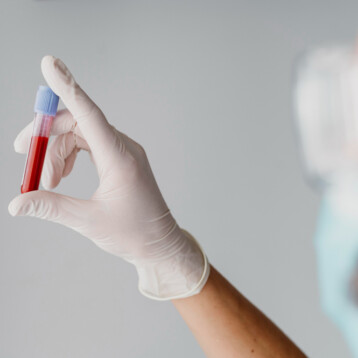|
The researchers use a virus called OBP-401, which was developed for purposes of an anti-cancer therapy. The modified cold virus enters all cells but only replicates in the presence of telomerase, an enzyme found in cancer cells that allows them to divide indefinitely by replacing the caps of DNA at the end of chromosomes that keep the genome stable.
The OBP-401 virus was modified to carry green fluorescent protein (GFP) derived from jellyfish. This protein fluoresces in blue light. Because the genome-stabilizing caps are replaced in the cancer cells, the protein can be integrated into the genome of the cancer cells, providing permanent markers that follow the cells as they grow or spread throughout the body.
The fluorescing process has been successfully tested in a wide variety of cancer cells in mice. Surgeons could visualize the tumors by exposing them to light at the wavelengths that trigger the fluorescence then looking through a filter designed to show GFP fluorescence. While not yet able to see individual cells using this technique, the researchers can see and remove small areas of cancer cells that would be invisible using the naked eye or more traditional imaging techniques.
Although not yet possible, this technique could also be used to treat cancer in the future. A gene designed kill the cancer cells could be grafted to the virus and thus directly targeted only at the cells doctors want to die. This could significantly limit collateral damage to healthy cells, something that isn’t always possible with current cancer treatments.
As with all potential genetic modifications and gene therapies, there are some problems with immune system reactions to the newly introduced genetic material. Scientists at Anticancer are planning a series of safety tests before attempting to bring the technique to human clinical trials. Another potential issue with human use is the greater complexity of our bodies; focusing the necessary light on spots buried deep within the body may be difficult. Because of this, the technique may prove most useful during surgery when the affected area is already exposed.
TFOT has previously reported on other innovative cancer research and treatments including gold nanorods that seek out and destroy cancer cells, the ENose electronic scent detector that can distinguish between healthy and cancerous cells, localized cancer treatments using ultrasound-activated microbubbles, a way to diagnose cancer by analyzing the breath of patients, and a new method of filtering cancer cells out of the bloodstream to slow or halt its spread throughout the body.
Read more about the AntiCancer cancer marker in this press release (PDF).











